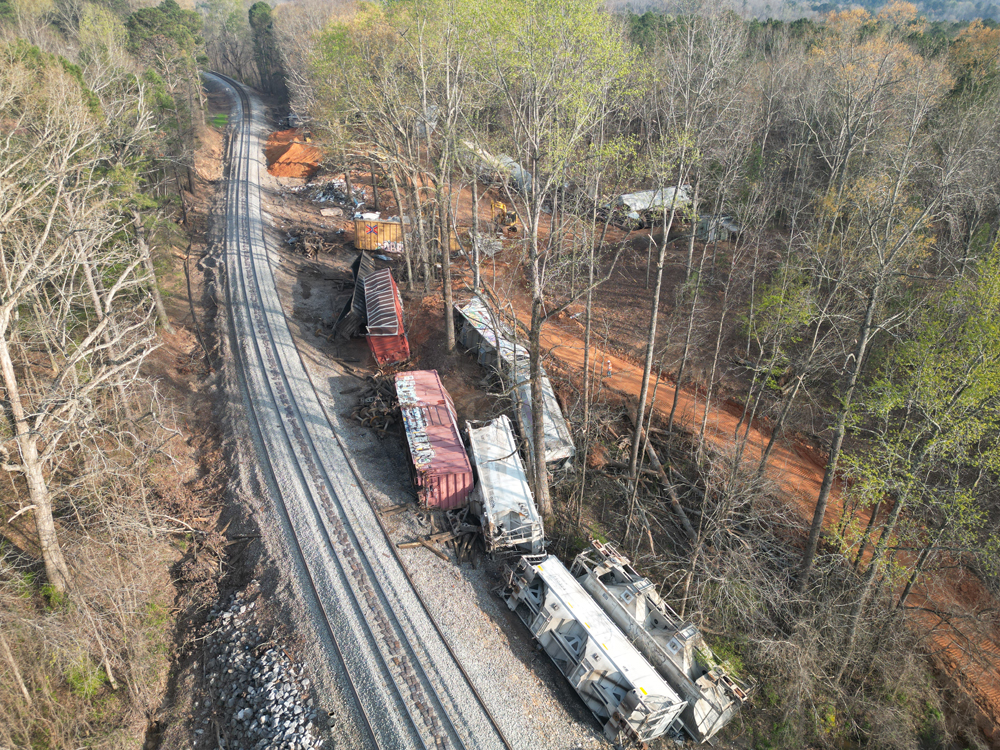
WASHINGTON — Two locomotives being transported dead-in-tow were coupled together, contrary to Norfolk Southern operating rules, in the consist of the NS train that derailed March 9 near Anniston, Ala., according to a preliminary National Transportation Safety Board report released Monday.
With Norfolk Southern under close scrutiny in the wake of February’s derailment in East Palestine, Ohio, the Alabama incident received additional attention because it came shortly before NS CEO Alan Shaw testified before a Senate hearing [see “Norfolk Southern train derails …,” Trains News Wire, March 9, 2023].
The derailment involved two locomotives and 37 cars of a six-locomotive, 108-car train at about 6:19 a.m. EST. Two portions of the train derailed: two locomotives and 29 cars near the head end, and eight cars near the rear. There were no injuries and no release of hazardous materials — although three cars in the consist contained hazardous-material residue. NS has estimated total damage at $2.9 million.
The dead-in-tow locomotive — waybill locomotives being transported for revenue —should not have been coupled together, according to NS rules, because they were not equipped with alignment control couplers. Those couplers resist lateral coupler movement under compressive in-train forces, according to the report. Initial accident reports provide basic information on an incident and do not attempt to determine a probable cause, so this report does not necessarily indicate the locomotive issue led to the derailment.
The report indicates the NTSB’s ongoing investigation will focus on NS communication, maintenance, and inspection practices; locomotive and railcar positioning; and train handling.














I have moved locomotives as an escort over Class 1s. I have had railroad brass get in my face, look me right in the eye and ask, “Do these locomotives have alignment control couplers?” looking for any sign of hesitation when I say “yes.” We all know the rules. Has it become acceptable to conveniently turn a blind eye if it means meeting ambitions? Or are there not enough eyes inspecting these trains anymore?
Well Daniel, if that train had to be delayed to have those locos set out before it departed, well that would have a negative impact on that train’s (and possibly, that division’s) PSR performance metrics, and the extra labor and delay could be a blip in the operating ratio for that week or month. That, in turn, might upset the Wall St. cokeheads, and…well we can’t have that, now can we?
CSX had a similar derailment a few years ago in LaGrange GA. 5 (?) locos from St Louis to be rebuilt derailed. CSX required all to be modified to alignment control before they would continue the movement. Took over a month for a private crew to finish the modification.
Your hearing letter is in the mail!